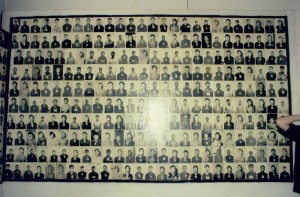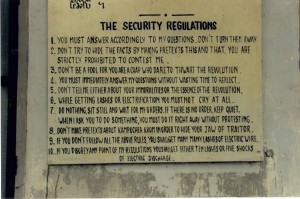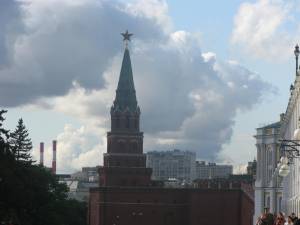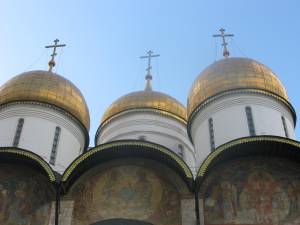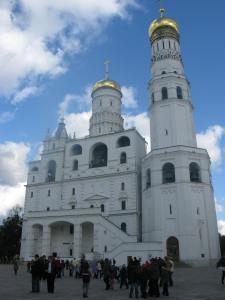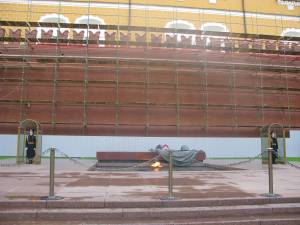I met the Chairman of the Pygmies in 1994. He was hard to find, but worth the effort. The town of Fort Portal is just over 300 kms from the capital of Uganda, Kampala. This is the gateway for anyone who wants to visit the pygmies, who are located a couple of hours away in the hills, close to the border of the Congo.
 Very few of these tribes still exist today and most of them are centralized in Central Africa. Pygmies are defined as males whose adult height does not exceed an average of 150 cms (4″11). In 1994 there were no day trips or organized tours to the pygmies in Uganda, but my hotel had arranged a driver to pick us up, and at 7am we were underway with a super man called James, who at a height of well over 6′ was obviously not a pygmy. The drive is very rural, with lush jungle on every side and takes us far into the surrounding hills. We make a rather muddy stop at some hot springs on the way.
Very few of these tribes still exist today and most of them are centralized in Central Africa. Pygmies are defined as males whose adult height does not exceed an average of 150 cms (4″11). In 1994 there were no day trips or organized tours to the pygmies in Uganda, but my hotel had arranged a driver to pick us up, and at 7am we were underway with a super man called James, who at a height of well over 6′ was obviously not a pygmy. The drive is very rural, with lush jungle on every side and takes us far into the surrounding hills. We make a rather muddy stop at some hot springs on the way.

 Then its only a short ride down a bumpy road before we reach a little village with mud huts. Pandemonium breaks out as we approach. Two dozen people race towards our car wailing and shrieking. These are the pygmies. One little guy steps out and calls himself the Chairman of the Pygymies. He is barely the height of my son who was 10 at the time.
Then its only a short ride down a bumpy road before we reach a little village with mud huts. Pandemonium breaks out as we approach. Two dozen people race towards our car wailing and shrieking. These are the pygmies. One little guy steps out and calls himself the Chairman of the Pygymies. He is barely the height of my son who was 10 at the time.
 This doesn’t look like a major tourist destination, but we are soon discussing money and what we will get for it. For the Ugandan equivelant of $25 we are offered a dancing display and as many pictures as we want. The dancing doesn’t look like its going to be up to any standard so I counter offer with $20 for a stroll round and as many pictures as I want. They are not keen on dollars and my Ugandan money is limited till I get to a bank, of which none exist in this forest. In the end we settle for $10 and 4ooo Ugandan Shillings. I spend my last 1ooo shillings on an opium pipe. On with the show and despite not knowing exactly what I bargained for we do get some dancing and even some singing at no extra cost. The instruments are limited to some flutes and an empty plastic can which seems to serve as a drum. I am not expert critique but I think I can safely say this show probably never made it to Broadway, but it certainly had a very ethereal quality to it.
This doesn’t look like a major tourist destination, but we are soon discussing money and what we will get for it. For the Ugandan equivelant of $25 we are offered a dancing display and as many pictures as we want. The dancing doesn’t look like its going to be up to any standard so I counter offer with $20 for a stroll round and as many pictures as I want. They are not keen on dollars and my Ugandan money is limited till I get to a bank, of which none exist in this forest. In the end we settle for $10 and 4ooo Ugandan Shillings. I spend my last 1ooo shillings on an opium pipe. On with the show and despite not knowing exactly what I bargained for we do get some dancing and even some singing at no extra cost. The instruments are limited to some flutes and an empty plastic can which seems to serve as a drum. I am not expert critique but I think I can safely say this show probably never made it to Broadway, but it certainly had a very ethereal quality to it.

 The village, if that’s what you want to call exists of nothing more than a cluster of primitive huts. The women appear almost trance like and there is very little sign of any industrial activity. The children all have distended stomachs. One must assume that their diet exists only of what they can forrage from the forest.
The village, if that’s what you want to call exists of nothing more than a cluster of primitive huts. The women appear almost trance like and there is very little sign of any industrial activity. The children all have distended stomachs. One must assume that their diet exists only of what they can forrage from the forest.

 Some of the men carry bows and arrows. Someone asks for my pen and I have distributed a few cigarettes, having little else to give them in the way of Western spoils.
Some of the men carry bows and arrows. Someone asks for my pen and I have distributed a few cigarettes, having little else to give them in the way of Western spoils.

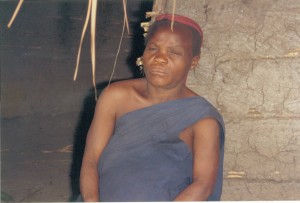 My driver James says the children have no schooling and they lead very simple lives. It seems living life at a very sub-existence level, but who am I to judge.
My driver James says the children have no schooling and they lead very simple lives. It seems living life at a very sub-existence level, but who am I to judge.
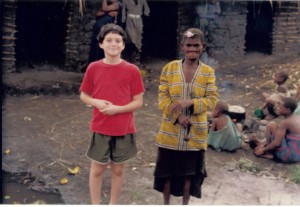 In a way I was happy to leave and I did so with a little sense of gloominess, as if I had somehow been an intruder. The chairman of the pygmies was happy though, he had just swapped his bow and arrow for my son’s bright red t’shirt.
In a way I was happy to leave and I did so with a little sense of gloominess, as if I had somehow been an intruder. The chairman of the pygmies was happy though, he had just swapped his bow and arrow for my son’s bright red t’shirt.


 The routine was as follows. A prisoner would be brought to the prison where they were phtographed (there are whole rooms with photos of the prisoners).
The routine was as follows. A prisoner would be brought to the prison where they were phtographed (there are whole rooms with photos of the prisoners).